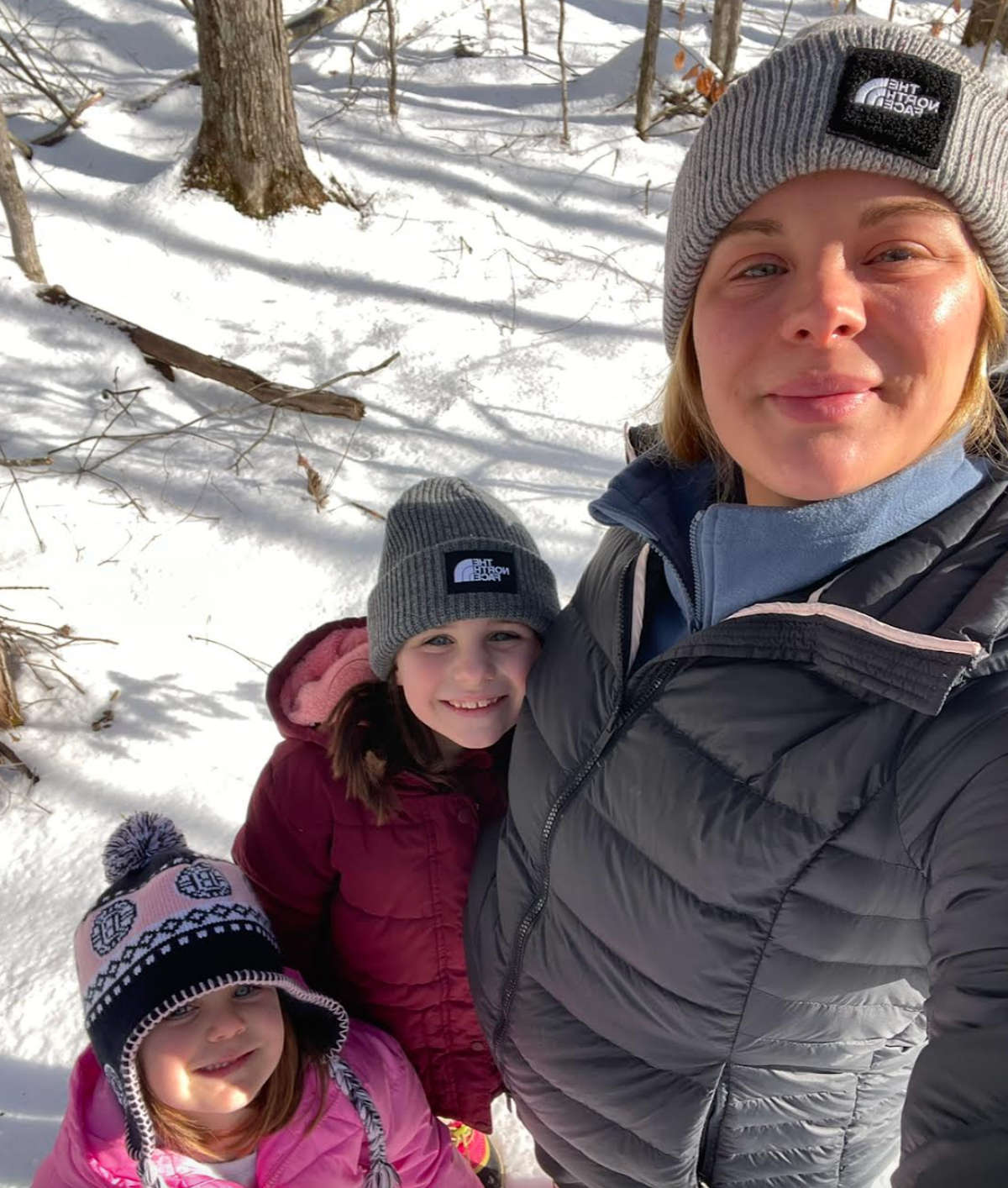January Prototype of the Month
Mike Collette • February 3, 2025
January POM: Rachel Matattal

Congratulations to Rachel for being January's Prototype of the Month! Below, she shares his experience with Prototype, what drives her, and the goals that keep her motivated.
1.) Share your experience at Prototype
I joined prototype after 9 years of at-home-workouts (mom life) My husband Tim had nothing but amazing things to say about the gym and most importantly the community, so in November of 2023, I decided to give it a try. From day one, I have only known smiles, laughter, and endless encouragement from each and every member I’ve met and had the pleasure of working out with. I now realize how important the class structure and environment, coaching, community, and commitment is!
2.) What is your favorite part about being at Prototype?
My favorite part of being at Prototype is the friendly and welcoming environment. There is a fair amount of accountability and just the right amount of pressure to push myself hard, and reach goals I could not achieve on my own without my partners and coaches who continually believe in me.
3.) What are your hobbies and activities?
I love to play outside and stay active with my two daughters and two black labs. I love to cook, especially for friends and family! Spending time in the White Mountains is our favorite.
4.) How has Prototype helped you or solved a problem for you?
Prototype has helped renew my courage and belief in myself. After becoming a mother, I not only lost a lot of my strength and endurance, but also my self esteem and self worth. Setting strength goals, building up my endurance to face challenges, and feeling stronger overall has impacted my physical, mental, and emotional health.
5.) What are you continuing fitness goals to this point?
My fitness goals are to be able to run farther distances, jump higher, and continue stacking on that weight on my power lifts! Thanks to Jon and our PT sessions, I continue to hit strength PR’s weekly which has me feeling so strong and proud.
6.) Favorite Quote
“I can do hard things!”
Previous Blogs

Devon is a fantastic part of our community — always kind, coachable, easy-going, and consistently putting in the work. She shows up, supports others, and truly represents what PTS is all about. Prototype of the Month is well deserved! Below, she answers a few questions about her time at PTS. 1.) Share your experience at Prototype After what felt like an entire year of sitting during grad school, I knew I wanted to be more active. I came back to Prototype, and it was the best decision. I’ve made so many new friends here who make every class fun (no matter how tough the workout is) but my favorite moment has to be meeting my boyfriend Ed! 2.) What is your favorite part about being at Prototype? I used to do at-home workouts and always felt like something was missing. When I came to Prototype, it felt like I finally found that missing piece, the community! It truly makes a huge impact. Everyone here genuinely wants the best for you. 3.) What are your hobbies and activities? If I’m outside, I love playing pickleball, skiing, and going for walks. And if I'm inside I enjoy crocheting, reading, or baking! 4.) How has Prototype helped you or solved a problem for you? Prototype has shown me that if you put your mind to something, you can truly do hard things. I also know I will always feel better after going to the gym. Sometimes the hardest part is just getting in the car, but I never regret it once I’m there. 5.) What are you continuing fitness goals to this point? To get some form of movement everyday and to one day get a pull up. 6.) Favorite Quote “Laughter is timeless, imagination has no age, dreams are forever.” -Walt Disney

Tim has been an incredible part of our community — always positive, funny, generous, and willing to help. His energy makes everyone around him better. Prototype of the Month is well deserved! Below he answers some questions about his time at PTS. 1.) Share your experience at Prototype This actually isn’t my first stint at Prototype - I’ve been around and worked out here a few times in my heyday. My very first legitimate class though, as a member, was 5am earlier this year and I was welcomed first by Nicole. You can all imagine how that interaction went… and I came back! Prototype is welcoming, fun, clean, and I’ve made amazing friends along the way. It is one of the best hours of my day. 2.) What is your favorite part about being at Prototype? Prototype is not just another workout but a mental reset for me, it fills my cup. 3.) What are your hobbies and activities? Activities mostly involve time with my family outside whenever we can, trips to Ptown and traveling all over for work. I have a hard time sitting still and typically keep a busy schedule. Mix in photography and interior design opportunities with fitness and family and I’d say that's my perfect mix. 4.) How has Prototype helped you or solved a problem for you? I work remotely so in person face to face conversation is something I’ve found I need for my mental health. I’m also super competitive so I tend to push a little harder when I workout with others. 5.) What are you continuing fitness goals to this point? I want to be a parent who can show up for their kids in every aspect of life, which also means physically. Staying fit is important to be able to keep up with them as we collectively get older. I am training for a few Hyrox races coming up but mostly just trying to maintain my current level of fitness for as long as possible. 6.) Favorite Quote “There is only one success - to be able to live your life in your own way” -Fortune Cookie
Climb to New Heights
Prototype Training Systems is more than a gym - it is a lifestyle. Join us today!


